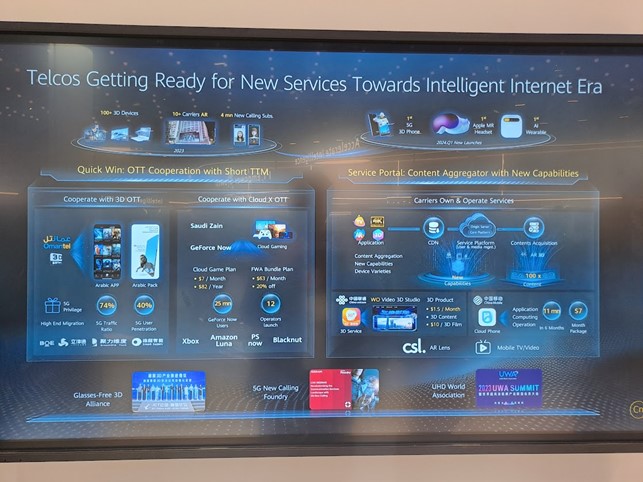MWC offered a perfect venue to learn about the current and developing setting of the mobile market. Here is my subjective summary based on what I saw and heard during the event. Many of the information details are referred also in GSMA intelligence, the official GSM Intelligence Network Transformation Survey 2023, and the GSMA Intelligence Operator Enterprise Survey, all of which had big roles in the event.

5G entering its next stage
It has been five years since the inaugural launch of the first 5G network in South Korea and the United States. Presently, 5G appears to be accessible in nearly every corner. Nonetheless, it is evident that 5G has not significantly impacted the growth of mobile revenue, which continues to remain relatively modest across most markets. The forthcoming introduction of the next generation of 5G networks is poised to play a pivotal role in bolstering growth within the mobile industry.

As of January 2024, commercial 5G mobile services had been launched by 261 operators across 101 countries worldwide. Anticipations are high for additional markets to join the trend, as more than 90 operators from 64 markets have committed to introducing 5G in the coming years. The number of 5G connections reached 1.6 billion by the end of 2023, and it is projected to surge to 5.5 billion by the end of the decade. This implies that over half of all mobile connections will be on 5G by the end of the decade. Concurrently, the prevalence of connections on legacy networks (2G and 3G) is expected to decline in the coming years as users transition to 4G and 5G. Despite substantial investments by operators in 5G networks, global mobile revenue growth has been and is anticipated to persist in a sluggish state until the end of the decade.
5G Standalone, 5G advanced and network APIs?
It is evident that the mobile industry is progressively transitioning towards the 5G standalone (SA) and 5G-Advanced standards to unlock innovative 5G use cases and enhance revenue streams. As of January 2024, 47 operators provided commercial 5G services on SA networks, and over half of the operators anticipate deploying 5G-Advanced within a year of the standards being released. The exposure of Network APIs can further assist operators in optimizing the monetization of their network assets. While this possibility has existed for some time, operators have faced challenges in adopting a standardized approach that facilitates the scalability of services.

5G evolution pushing the economic potential
In 2030, 5G is anticipated to contribute over 930 billion USD to the global economy, constituting approximately 15% of the overall economic impact of mobile technology. The majority of these benefits are projected to materialize in developed regions such as Asia Pacific, North America, and Europe, which are poised for robust growth in the next five years. As the decade concludes, low- and middle-income countries are expected to experience a growing share of 5G economic advantages, as the technology achieves widespread adoption. Overall, 5G is predicted to positively impact all economic sectors worldwide, with varying degrees of benefit depending on industries’ capacity to integrate 5G use cases into their operations. Over the next seven years, 36% of the anticipated benefits are expected to originate from the manufacturing sector, followed by 15% from public administration and 10% from services.
Private networks to the rescue
Private networks offer increased flexibility to address a company’s specific requirements, encompassing specialized coverage, low latency, bandwidth aggregation, and heightened data security and privacy. Although these networks have been in existence for some time, 3GPP has further refined the concept in 5G specifications.
During MWC2024, telecom operators and vendors identified private networks as a prime area of opportunity more than ever before. According to statistics, 2023 witnessed a significant acceleration in the commercialization of private 5G solutions by operators. By the end of 2022, approximately 30% of operators had either launched or were in the testing phase of private 5G. A year later, this share had doubled. The device ecosystem is gradually catching up as this development progresses. Previously, the limited availability of reasonably priced 5G devices often served as a hindrance to the rapid expansion of private networks. However, this scenario is evolving, and devices play a crucial role in enabling private network use cases, especially in connecting assets and operations for the first time.

So all in all, as many know, the overhype of 5G did happen and maybe only now, with some unexpected routes, things are happening and utilizing companies can expect to see some real benefits at scale. Very interesting times ahead of us.
-Jussi Leponiemi
